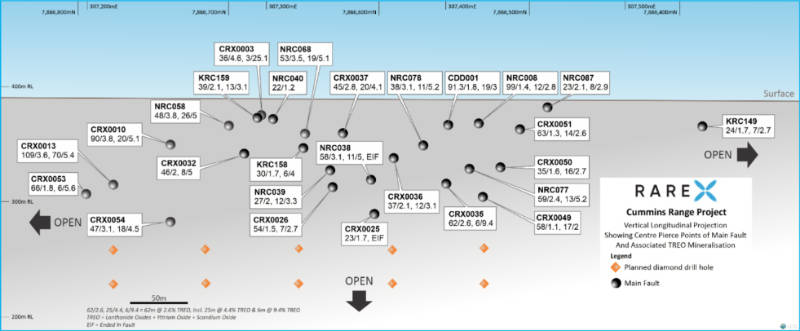RareX diamond drilling is all about scaling up Cummins Range

Pic: Tyler Stableford / Stone via Getty Images
Special Report: RareX has kicked off a very significant drill program at its Cummins Range rare earths project on the back of a big 47% increase in overall resource tonnage.
The diamond drilling program of over 3,000m – the first to be carried out at the project since 1982 – targets high-grade depth extensions of the mineralisation in the primary zone.
Larger samples will also be extracted for ongoing metallurgical testwork and geotechnical measurements to feed into the ongoing Feasibility Study work.
Significantly, RareX (ASX:REE) says the drilling marks the first-ever test of the deposit’s primary potential and could significantly grow the scale of the resource.
“The start of diamond drilling is a very exciting development, as this will be the first time any diamond drilling has been undertaken at Cummins Range since CRA (now Rio Tinto) in 1982,” managing director Jeremy Robinson said.
“If we are successful with any aspect of the program, it will rapidly enhance the size and quality of the deposit, building on the landmark Mineral Resource upgrade announced earlier this month – which has already established Cummins Range as one of the most significant and highest grade rare earth resources on the ASX.
“We have sought extensive heritage clearances to facilitate ongoing exploration and a rapid expansion of the drill program in the event that we are successful.”
Drilling is expected to take about two months to complete.

Cummins Range
The Cummins Range project in Western Australia’s Kimberley region currently hosts a resource of 18.8 million tonnes grading 1.15% total rare earth oxides (TREO) that includes 0.23% neodymium and praseodymium plus 0.14% niobium oxide following the recent resource upgrade.
While the Cummins Range basket of rare earths is already valuable thanks to the high NdPr content, the inclusion of niobium is also significant due to its scarcity and value in making lightweight, high-strength steel alloys.
As part of the upgrade, RareX also defined a maiden Indicated Resource of 11.1Mt at 1.3% TREO including 0.27% NdPr plus 0.17% niobium oxide and a higher-grade core of 6.5Mt at 1.98% TREO (including 0.38% NdPr) plus 0.21% niobium oxide.
This Indicated Resource is particularly important as it will be available for conversion into ore reserves as part of the upcoming economic studies.
This article was developed in collaboration with RareX, a Stockhead advertiser at the time of publishing.
This article does not constitute financial product advice. You should consider obtaining independent advice before making any financial decisions.
Related Topics

UNLOCK INSIGHTS
Discover the untold stories of emerging ASX stocks.
Daily news and expert analysis, it's free to subscribe.
By proceeding, you confirm you understand that we handle personal information in accordance with our Privacy Policy.








